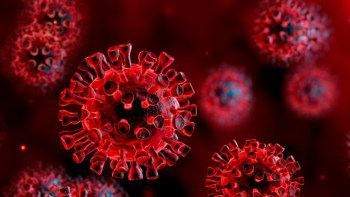
Physicists in France have come up with a new and simple way of propelling objects through a viscous fluid. They say that the technique could someday be used to create tiny swimming robots for biological applications such as drug delivery.
Swimming micro-organisms and similarly sized micro-swimmer robots operate in a low-Reynolds number environment, in which viscous forces dominate. This puts significant limits on how a micro-organism or robot can propel itself. Swimming is a cyclical process that involves a body changing its shape in a propulsion stroke and then going back to its initial shape in a return stroke. In a high-viscosity environment, drag can cause the propulsion and return strokes to cancel each other out – the result being little or no motion.
Micro-organisms get around this problem by changing their shapes in at least two different directions. However, building micro-swimmer robots capable of such complicated motions can be challenging.
One direction
Now, Gwennou Coupier and colleagues at the University of Grenoble Alpes in France, have built a robot that can swim in a high-viscosity environment using a simple, unidirectional shape change.
Their system comprises a balloon-like sphere that is inflated and deflated by pumped air delivered through a small hose. The sphere has a diameter of 5 cm and was tested in a fluid that is 10,000-times more viscous than water. This ensures that it experiences the same low-Reynolds number environment as does a 50 µm sphere in water.
Motion occurs when the sphere is deflated, creating a dimple. Friction between the surface of the dimple and the liquid pulls the sphere in the direction of the dimple. The sphere is then inflated, which causes a force in the opposite direction. Crucially, the way in which the shape changes during reflation is not simply the reverse of how it changes when deflating – and this asymmetry results in the net motion of the sphere.
Drug delivery
Coupier and colleagues suggest that ultrasound could be used to deflate and inflate micrometre-sized shells, causing them to move at a speed of about 1 cm/s through water. This, they write in Physical Review Letters, could be used to create remote-controlled micro-robots for applications such as drug delivery.



